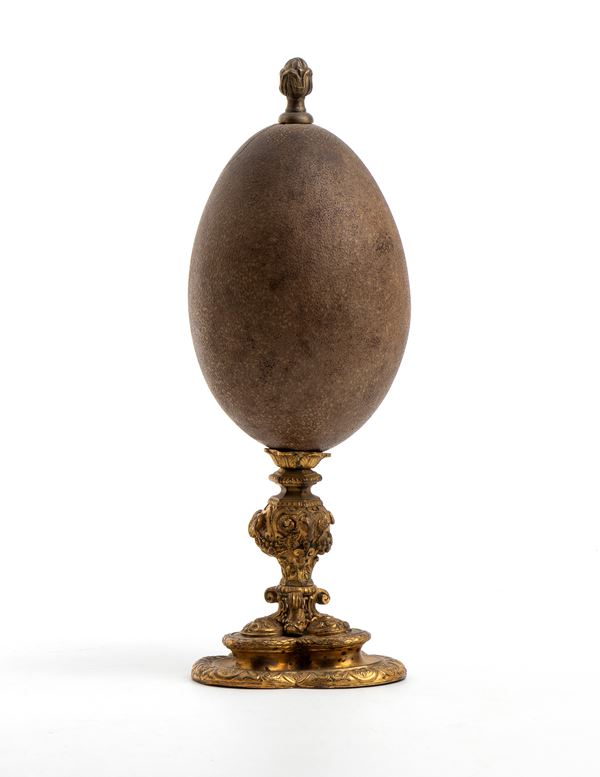30
Emu egg with gilded bronze base, 19th century
Height x width x depth: 26 x 8 x 8 cm. Weight: 285 g.
Gilded bronze trefoil base worked in chiselling and embossing with floral figures and ram's heads on which rests an egg of Emu (Dromaius novaehollandiae Latham, 1790), a large bird belonging to the family Casuariidae, endemic to Australia. The mount and decorative context reflected the artistic style of the time, such as Baroque or Rococo.
Objects made using an emu egg belong to a category of decorative or ceremonial artefacts typically associated with the European taste for collecting rarities during the Renaissance and Baroque periods (16th-18th centuries). Emu eggs, due to their dark colour, usually dark green or black, and naturally speckled surface, were prized for their unique aesthetics and often incorporated into luxury items such as decorative chalices and objects from the Wunderkammer, the ‘chambers of wonder’ that collected rare and exotic objects.
The emu egg trade became more common in the 18th and 19th centuries, during the British colonial expansion into Australia.
Live auction 327
Curiosities from European and Oriental Art
Curiosities from European and Oriental Art
Silvers, Ivories, Corals, Icons and Wunderkammer
Palazzo Caetani Lovatelli, tue 25 February 2025
FIRST SESSION
25/02/2025 Hours 12:00 pm
Lots 1/167
SECOND SESSION
25/02/2025 Hours 04:00 pm
Lots 168/346






